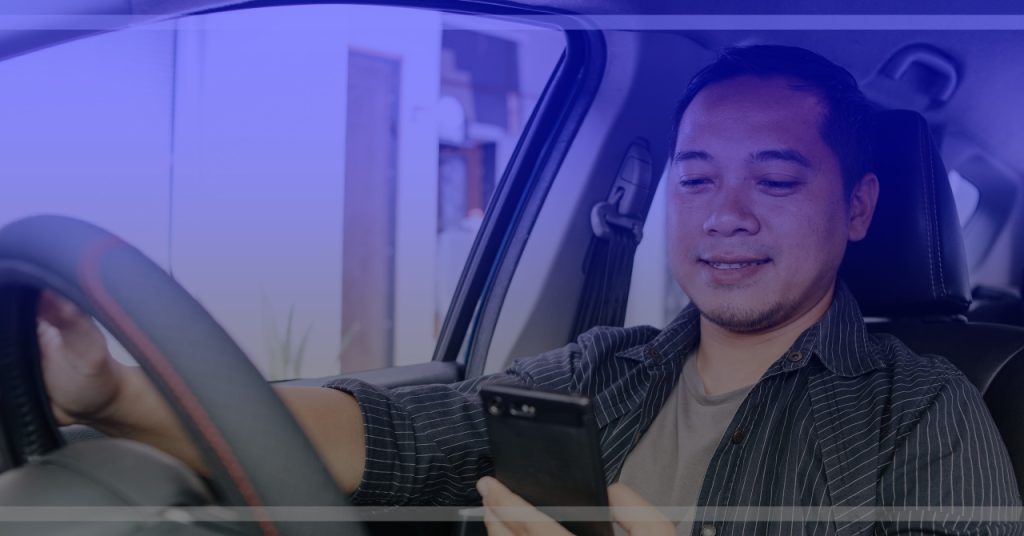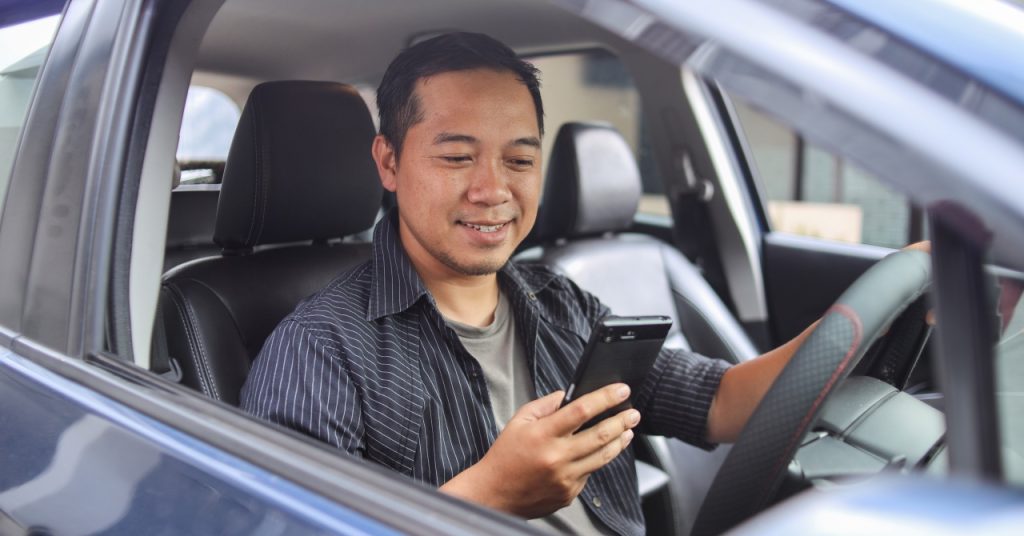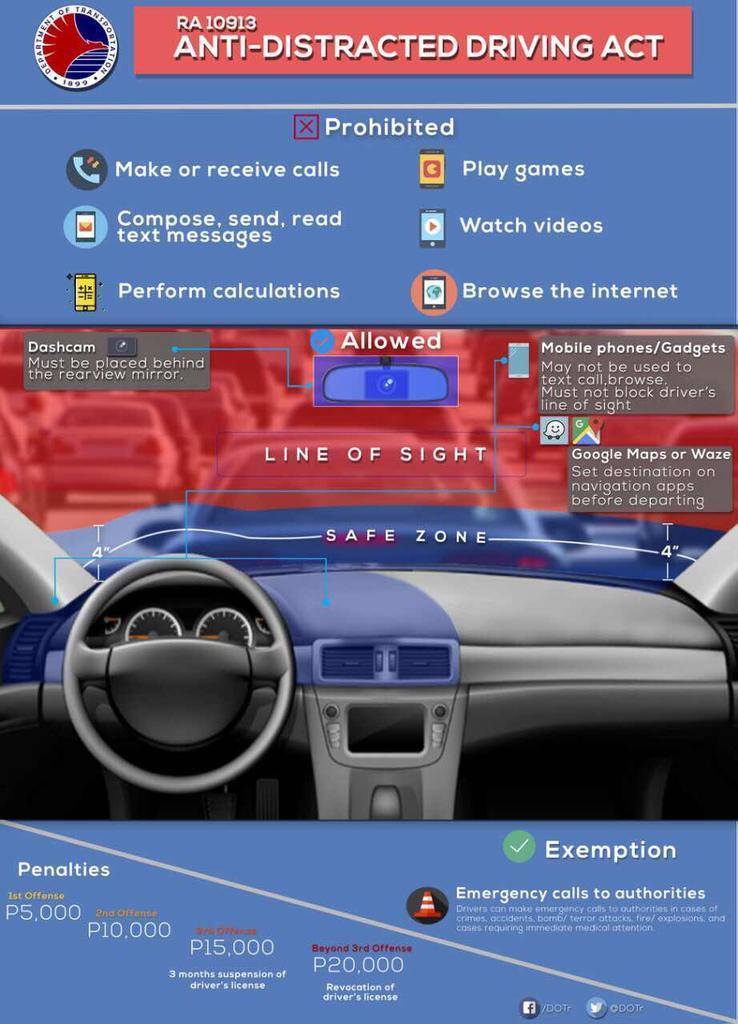The Anti-Distracted Driving Act, also known as RA 10913, was passed to address the growing problem of accidents caused by distracted driving in our country. This law aims to reduce traffic accidents by limiting drivers’ use of mobile phones and other devices while behind the wheel.
Distracted driving has become one of the main contributors to road accidents, with studies showing that even a few seconds of inattention can lead to devastating results. The law applies to all drivers, whether they are driving a private, public, or diplomatic vehicle.
The Department of Transportation (DOTr) and the Land Transportation Office (LTO) are the overseeing agencies responsible for enforcing RA 10913. These agencies have an important role in monitoring compliance, apprehending violators, and applying penalties.
While RA 10913 is important for promoting road safety, understanding its provisions is key for all drivers.

What is Distracted Driving?
Under RA 10913, distracted driving refers to operating a motor vehicle while using mobile communication devices or electronic entertainment and computing devices that divert a driver’s attention from the road. These distractions can cause drivers to take their focus off the task at hand, leading to accidents.
Common examples of distracted driving include texting, making calls without using hands-free technology, or using entertainment apps on a mobile phone. Any activity that diverts the driver’s attention from the road, even for a brief moment, can be considered distracted driving.

Mobile Communications and Electronic Devices Covered
The law targets the following devices:
- Mobile Communications Devices: This includes mobile phones, smartphones, two-way radios, and other wireless communication tools that can be used to make calls, send text messages, or browse the internet.
- Electronic Entertainment and Computing Devices: Devices such as laptops, tablets, or video game consoles, which are often used for non-driving-related activities like watching videos, gaming, or surfing the internet.
Using these devices while driving is strictly prohibited unless in accordance with exemptions such as hands-free calls or emergency use.
Prohibited Acts Under RA 10913
The law clearly outlines the following prohibited acts for drivers:
- Texting and Messaging: Writing, sending, or reading text-based communications, including SMS, emails, or social media messages, is strictly prohibited while driving.
- Making or Receiving Calls: Using a handheld device to make or receive phone calls is forbidden. If a call is necessary, it must be done using a hands-free device.
- Using Electronic Devices for Entertainment: Playing games, watching videos, browsing the internet, or engaging in any non-driving-related activities through mobile phones, laptops, tablets, or similar devices is prohibited while driving.
Other distractions, such as adjusting the radio or engaging in excessive conversation with passengers, are also discouraged under the law as they can similarly impair focus on the road.

Extent of Coverage
RA 10913 applies to all motor vehicles, whether private, public, or diplomatic. It applies not only when vehicles are in motion but also when they are temporarily stopped at a traffic light or during a short pause in traffic.
This wide coverage makes sure that all vehicles on the road, regardless of their purpose or origin, follow the same standards for road safety. Whether you’re driving a private car, a public jeepney, or even a diplomatic vehicle, the law applies equally.
Exemptions to the Rule
While RA 10913 aims to limit distractions for safety, there are specific exemptions:
- Use of Hands-Free Devices: Making or receiving phone calls using a hands-free device is permitted under the law. This exemption allows drivers to communicate without physically handling a phone.
- Emergency Purposes: Devices may be used in emergency situations, such as calling for help or notifying authorities about urgent matters.
- Navigation Apps: Using GPS or navigation apps is allowed as long as the device is properly mounted and does not obstruct the driver’s view of the road. This ensures that the device doesn’t become a safety hazard itself.
It is important to remember that these exemptions are for responsible use of technology, and any misuse will still be subject to penalties.
Penalties for Violations
Violating RA 10913 can lead to serious consequences. Here’s what drivers can expect:
- First Offense: A fine of PHP 5,000 will be imposed on the driver for the first violation.
- Second Offense: The fine increases to PHP 10,000, and the driver’s license will be suspended for a period of one month.
- Third Offense: The fine for a third violation is PHP 15,000, with a license suspension of up to three months.
The increasing fines and suspension periods aim to discourage repeated violations and encourage safe driving practices among all drivers.
Apprehending Authority
The enforcement of RA 10913 falls under the responsibility of several government agencies, primarily the Department of Transportation (DOTr) and the Land Transportation Office (LTO). These agencies have an important part in implementing and monitoring compliance with the law.
Traffic enforcers are tasked with identifying violators, issuing penalties, and ensuring that drivers follow the provisions of the law. Cameras and other monitoring systems have also been set up in high-traffic areas to detect distracted driving behaviors.
When a driver is apprehended, the procedure usually involves the enforcer documenting the violation, issuing a fine or suspension notice, and advising the driver of their legal rights.
Important Reminders for Drivers
It is essential for every driver to be aware of some important reminders to help them avoid violating RA 10913:
- Mount Devices Properly: When using navigation apps, ensure that the device is securely mounted and does not obstruct the driver’s view of the road. This small step can help prevent fines and contribute to safer driving.
- Minimize Distractions: Apart from mobile devices, remember that anything else that takes your attention away from the road can be a distraction. Stay focused and avoid engaging in activities such as texting, checking social media, or adjusting entertainment systems while driving.
- Know the Law: Being familiar with the provisions of RA 10913 is key for all drivers. By understanding what is allowed and what isn’t, you can stay compliant and contribute to safer driving.
Frequently Asked Questions
- Can I use my mobile phone if it’s mounted in my car? Yes, you can use your phone for navigation or emergency calls as long as it is properly mounted and does not block your view.
- Is it illegal to use my phone at a stoplight? Yes, the law applies even when your vehicle is temporarily stopped at a red light or in traffic.
- Are there any exceptions to using electronic entertainment devices? The law does not allow the use of entertainment devices like tablets or laptops while driving. Only hands-free calls are allowed.
- How will traffic enforcers catch distracted drivers? Traffic enforcers can monitor drivers through traffic cameras, observation, and direct interactions, especially in high-traffic areas.
Video: Anti-Distracted Driving Act: Things You Need to Know | Manibela
The video underscores the perils of distracted driving, especially when using mobile devices.
It emphasizes the need for safety measures and regulations to prevent accidents.
Various examples of distraction, from texting to browsing, highlight the importance of focused driving.
The video outlines the laws against using communication devices while driving.
Remember, it’s better to be safe than sorry.
Conclusion
The Anti-Distracted Driving Act (RA 10913) is a significant piece of legislation that helps promote road safety by reducing distractions behind the wheel. By limiting the use of mobile phones and other devices, the law helps reduce the risks of accidents caused by drivers who are not paying full attention to the road.
As drivers, we all have a responsibility to follow this law and prioritize safety. By adhering to the rules, staying focused, and minimizing distractions, we can help make roads safer for ourselves and others.
Let’s all commit to making road safety our priority, not just for ourselves, but for everyone on the road.